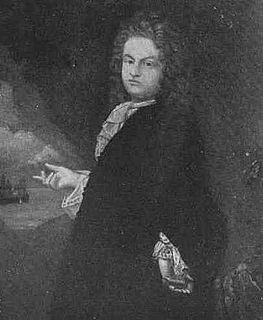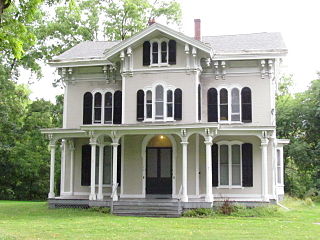
Dutchess County is a county in the U.S. state of New York. As of the 2010 census, the population was 297,488. The county seat is the city of Poughkeepsie. The county was created in 1683, one of New York's first twelve counties, and later organized in 1713. It is located in the Mid-Hudson Region of the Hudson Valley, north of New York City.

Putnam County is a county located in the U.S. state of New York. As of the 2010 census, the population was 99,710. The county seat is Carmel. Putnam County formed in 1812 from Dutchess County and is named for Israel Putnam, a hero in the French and Indian War and a general in the American Revolutionary War.

Wappinger, officially the Town of Wappinger, is a town in Dutchess County, New York, United States. The town is located in the Hudson River Valley region, approximately 55 miles (89 km) north of Midtown Manhattan, on the eastern bank of the Hudson River. The population was 27,048 at the 2010 census. The name is derived from the Wappinger Native Americans who inhabited the area. Wappinger comprises three-fourths of the incorporated Village of Wappingers Falls, several unincorporated hamlets such as Chelsea, Diddell, Hughsonville, Middlebush, Myers Corners, New Hackensack, and Swartwoutville, and a number of neighborhoods.

The Great Nine Partners Patent, also known as the "Lower Nine Partners Patent," was a land grant in Dutchess County, New York, made on May 27, 1697, by New York governor Benjamin Fletcher. The parcel included about four miles (6 km) along the Hudson River and was eight to ten miles wide, extending from the Hudson River to the Connecticut border.

The Madam Brett Homestead is an early 18th-century home located in the city of Beacon, New York, United States. It is the oldest standing building in its part of Dutchess County and has been listed in the National Register of Historic Places since 1976. It is also listed on the NYS Independence Trail.

Mount Gulian is a reconstructed 18th century Dutch manor house on the Hudson River in the town of Fishkill, New York, United States of America. The original house served as the headquarters of Major General Friedrich Wilhelm von Steuben during the American Revolutionary War and was the place where the Society of the Cincinnati was founded. The site is registered as a National Historic Landmark.

Frederick Philipse, first Lord of the Manor of Philipseborough (Philipsburg) and patriarch of the Philipse family, was a Dutch immigrant to North America of Bohemian heritage. A merchant, he arrived in America as early as 1653. In 1662 he engaged in a marriage to a wealthy and driven widow, Margaret Hardenbrook de Vries. Together, and variously in league with slavers, pirates, and other undesirables, the couple combined their industry to amass a fortune.
Nine Partners Patent may refer to:
Francis Rombouts was the 12th Mayor of New York City,, from 1679 to 1680. He was one of three proprietors of the Rombout Patent, and father of pioneering Colonial businesswoman Catheryna Rombout Brett.

The Casperkill is a creek in both the town and city of Poughkeepsie, Dutchess County, New York. It flows 11.6 miles (18.7 km) from Peach Hill Park to the Hudson River. Combined with its only major tributary, the Fonteyn Kill, it forms a 12 sq mi (31 km2) subwatershed. It lies entirely within the British royal grant of 1685 known as the Rombout Patent.

Philipsburg Manor was an English manor located north of New York City in Westchester County in the Province of New York. Netherlands-born Frederick Philipse I and two partners made the initial purchase of land that had been part of a Dutch patroonship owned by Adriaen van der Donck. Philipse subsequently bought his partners out and added more land before being granted a royal charter in 1693 for the 52,000 acres (21,000 ha) estate, becoming its first Lord.

Rombout House is a historic home located at Poughkeepsie, Dutchess County, New York. It was built about 1854 on land that had been part of the original British royal Rombout Patent of 1685 and is a 2 1⁄2-story, three-bay-wide, Hudson River Bracketed architectural style dwelling. It sits on a raised basement and features a central pavilion. It has been owned by Vassar College since 1915.

Philipse Manor Hall State Historic Site is a historic house museum located in the Getty Square neighborhood of Yonkers, New York. Originally the family seat of Philipse Manor, it is Westchester County's oldest standing building. Located near the Hudson River at Warburton Avenue and Dock Street, it is owned and operated by the New York State Office of Parks, Recreation and Historic Preservation.

Adolphus Philipse (1665–1750) was a wealthy landowner of Dutch descent in the Province of New York. In 1697 he purchased a large tract of land along the east bank of the Hudson River stretching all the way to the east to the Connecticut border. Then known as the "Highland Patent" it became in time referred to as the Philipse Patent. After his death the Patent was inherited by his nephew, Frederick Philipse II, his only heir-at-law, who became the second Lord of the Manor of Philipsborough in Westchester County.

The Philipse Patent was a British royal patent for a large tract of land on the east bank of the Hudson River about 50 miles north of New York City. It was purchased in 1697 by Adolphus Philipse, a wealthy landowner of Dutch descent in the Province of New York, and in time became today's Putnam County.

The Rombout Patent was a Colonial era land patent issued by King James II of England in 1685 sanctioning the right of Francis Rombouts and his partners Stephanus Van Cortlandt and Jacobus Kip to own some 85,000 acres (340 km2) of land they had purchased from Native Americans. The Patent included most of what is today's southern Dutchess County, New York.

Catheryna Rombout Brett was the daughter of New York City mayor and land baron Francis Rombouts and Helena Teller Bogardus Van Ball. She inherited a one-third interest in the sprawling Rombout Patent in today's southern Dutchess County, New York, at just four years old. At 16 she married a formal British naval lieutenant, Roger Brett, and the two relocated afterwards from the family home in New York City to their land upstate, reportedly the first permanent White settlers there.

Gulian Verplanck (1637–1684), eldest son of Abraham Isaacsen Verplanck, was a merchant, fur trader, and purchaser of a 1/3rd interest in what became the sprawling Rombout Patent in the southeast of the then Province of New York. He was married to Hendrikja Wessels.
David Jamison was a Scottish-American lawyer, judge, and provincial official in the Province of New York and New Jersey.

The Fauconnier Patent was a royal land patent granted in 1705 in Dutchess County, Province of New York. It was the twelfth of fourteen granted between 1685 and 1706 that came to comprise the entirety of the historic county footprint.














